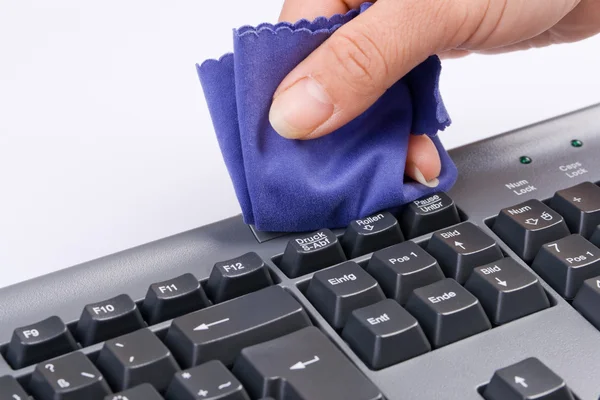A keyboard not typing letters may be caused by hardware failure, software glitches, or user error. Troubleshoot by checking physical damage, updating drivers, adjusting language settings, and disabling accessibility features.
A keyboard that refuses to type letters can feel like a major roadblock, especially when you rely on it for work, communication, or gaming. Whether it’s due to a hardware glitch, software issue, or even a simple user error, the impact on productivity can be frustrating. Don’t worry—we’re here to break it all down and help you get your keyboard back in action.
Understanding the Problem:
There are several reasons why your keyboard might stop typing letters. Knowing what could be behind the issue will help you tackle it effectively.
Potential Causes:
Hardware Failure
- Physical damage or wear and tear on the keyboard components.
- Connection issues with wired keyboards or low batteries in wireless ones.
Software Glitches
- Outdated or corrupted keyboard drivers.
- Conflicts caused by third-party software.
User Error
- Accidental changes in language or input settings.
- Pressing the wrong key combinations, such as enabling “Filter Keys” or “Num Lock”.
Troubleshooting Steps:

Follow these step-by-step instructions to identify and resolve the issue:
1. Check Physical Hardware
- Inspect Your Keyboard: Ensure no physical damage. Also, check if it’s connected correctly for wired keyboards or if batteries are charged for wireless ones.
- Test on Another Device: Plug the keyboard into a different computer to rule out device-specific issues.
2. Update/Reinstall Keyboard Drivers
- Press `Windows Key + R`, type `devmgmt.msc`, then hit Enter.
- Expand Keyboards, right-click your keyboard, and select Update Driver or Uninstall (then restart the computer—drivers should reinstall automatically).
3. Adjust Language Settings
- Navigate to Settings > Time & Language > Language & Region.
- Ensure the correct keyboard layout is selected.
4. Disable Sticky/Filter Keys
- Go to Settings > Accessibility > Keyboard.
- Turn off Sticky Keys, Filter Keys, or any similar feature that might interfere.
5. Scan for Malware
Perform a full virus scan using your antivirus software. Malware can occasionally disrupt keyboard functionality.
6. Update Keyboard Drivers
Outdated or incompatible keyboard drivers can cause functionality problems. Visit the manufacturer’s website or use Windows Update to check for and install the latest drivers for your keyboard.
7. Check for Physical Damage
Inspect your keyboard for any physical damage, such as loose or stuck keys. If you notice any issues, consider contacting the manufacturer for repair or replacement options.
Also Read: Keyboard Not Working – Top Reasons and Fixes!
8. Try a Different USB Port
If you are using a USB keyboard, try connecting it to a different USB port on your computer. Sometimes, certain ports may have compatibility issues.
9. Test the Keyboard on Another Device
To determine if the issue is with the keyboard itself or your computer, try connecting it to another device. If the keyboard works fine on another device, it may indicate a specific compatibility problem with your computer.
10. Seek Professional Assistance
If you have exhausted all troubleshooting options and the keyboard still does not function correctly, consider reaching out to a professional technician for further assistance.
By following these additional troubleshooting steps, you can further diagnose and resolve any persistent keyboard issues, ensuring a seamless and efficient typing experience.
Also Read: What Is An Island Style Keyboard – Features, Benefits, and Uses!
Alternative Solutions:
While working on a fix, try these temporary input methods to avoid interruptions:
- On-Screen Keyboard: Access the on-screen keyboard by typing `osk` into the Start Menu search bar.
- Speech-to-Text Software: Use native tools like Windows’ Voice Typing or third-party apps to dictate content.
Prevention Tips:

Avoid keyboard trouble in the future with these simple but effective tips:
- Keep Your Keyboard Clean: Regularly clean your keyboard to prevent dust or debris buildup.
- Avoid Food and Drinks Nearby: Spilled liquid or crumbs are a keyboard’s worst enemies!
- Handle with Care: Use your keyboard gently and avoid pressing keys too hard.
Advanced Troubleshooting Techniques:
For more complex keyboard issues, here are some advanced troubleshooting techniques that can help you pinpoint and resolve the problem:
- Update Keyboard Drivers: Functionality problems may arise from outdated or incompatible keyboard drivers. To check for driver updates, use the Device Manager or go to the manufacturer’s website.
- Scan for Malware: Certain malware or viruses can interfere with keyboard functionality. Run a comprehensive antivirus scan to detect and remove any malicious software.
- Check Keyboard Settings: Ensure that the keyboard language and layout settings are configured correctly in your operating system’s settings. Consider resetting the settings to default if necessary.
- Test with a Different USB Port: If you’re using a USB keyboard, try plugging it into a different USB port on your computer to rule out any port-related issues.
- Try the Keyboard on Another Device: Connect the keyboard to another computer or device to determine if the issue persists. This helps identify whether the problem lies with the keyboard or the computer itself.
Keyboard Is Not Typing Letters:
If your keyboard is not typing letters, the issue could be a faulty connection, outdated drivers, or a stuck function key. Try restarting your computer, checking for debris under the keys, or reconnecting a wireless keyboard. If the problem persists, updating drivers or replacing the keyboard may be necessary.
Professional Assistance:
If you have exhausted all troubleshooting options and the keyboard issues persist, it may be time to seek professional assistance. Contacting a reputable technician or reaching out to the manufacturer’s support team can provide further guidance and help resolve the problem effectively.
By following these additional troubleshooting steps and exploring advanced techniques, you can gain a deeper understanding of keyboard issues and take the necessary steps to resolve them.
FAQs:
1. Why isn’t my keyboard typing letters?
It could be due to hardware failure, outdated drivers, or software conflicts. Check your keyboard, update drivers, and ensure language settings are correct.
2. How can I fix keyboard driver issues?
Press Windows Key + R, type devmgmt.msc, right-click your keyboard, and select “Update Driver” or “Uninstall” to reinstall it.
3. What should I do if sticky keys are causing problems?
Go to Settings > Accessibility > Keyboard and disable Sticky Keys, Filter Keys, or any similar accessibility feature that may be interfering.
4. How can I prevent keyboard issues?
Keep your keyboard clean, avoid spills, and handle it gently to prevent debris buildup or damage.
5. When should I seek professional help for my keyboard?
If troubleshooting steps don’t resolve the issue, consult a technician or the manufacturer for further diagnosis and repair.
Conclusion:
If your keyboard isn’t typing letters, it could be due to hardware or software issues. Try inspecting the device, updating drivers, checking settings, or scanning for malware. Another device can be used to test the keyboard. For persistent problems, consider professional repair. Regular maintenance, such as cleaning and careful use, can help prevent future issues. By following these troubleshooting steps, you can restore your keyboard’s functionality.
